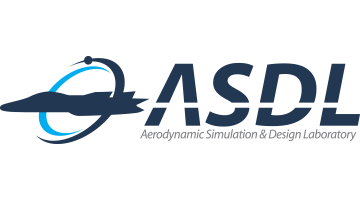ASDL 연구팀, Journal of Computational Physics 학술지 논문 게재
ASDL 연구팀에서 Journal of Computational Physics 학술지에 투고한 논문이 2025년 12월자로 게재되었습니다. 축하합니다!
Title: Adaptive subcell shock capturing for discontinuous galerkin methods in high speed flows I. Two-dimensional mixed meshes
Author: Taegeon Kim, Juhyun Kim, Hojun You, Chongam Kim
Journal: Journal of Computational Physics, 542, 114361. (December 2025)
DOI:10.1016/j.jcp.2025.114361
Abstract:
We propose a novel subcell shock capturing for the discontinuous Galerkin (DG) method to simulate high-speed flows involving strong physical discontinuities. High-order simulations of hypersonic flows have remained challenging, primarily due to the susceptibility of high-order methods to numerical oscillations near strong physical discontinuities. While the posteriori subcell limiting demonstrated some desirable features to hypersonic flow simulations, we observe that it also suffers from Gibbs-Wilbraham (GW) oscillations when the subcell finite volume method (FVM) solutions are used to reconstruct a high-order solution, leading to the loss of accuracy and robustness, especially in steady-state simulations. To address this issue, we firstly design a novel detection process for GW oscillations at reconstruction step. Analyzing the nature of reconstructed polynomials exhibiting GW oscillations, we obtain the conditions to design the indicators for boundary and interior oscillations, from which a process to detect reconstruction oscillations is formulated. We then retain the subcell FVM solutions if reconstruction oscillations are persistent at reconstruction step. At the interface boundary of DG cell and FVM cell, the flux coupling between DG solutions and subcell FVM solutions is realized by evaluating the numerical fluxes on subcell boundary points using the direct reconstruction method (DRM). As a result, the DG-FVM solver facilitates the simultaneous update of the subcell FVM solutions and neighboring DG solutions at each time step. Extensive high-order simulations of high-speed flows up to a free stream Mach number of 20, including hypersonic thermochemical equilibrium flows and hypersonic shock-shock interactions, are conducted to assess and verify the performance of the proposed subcell shock-capturing strategy, called adaptive subcell limiting process (ASLP). The numerical results demonstrate the outstanding accuracy and robustness in capturing physical discontinuities across a wide range of high-speed flows, even on curved-mixed meshes. Moreover, the proposed method shows improved convergence of aerodynamic coefficients by effectively damping temporal oscillations induced by shock waves.
Title: Adaptive subcell shock capturing for discontinuous galerkin methods in high speed flows I. Two-dimensional mixed meshes
Author: Taegeon Kim, Juhyun Kim, Hojun You, Chongam Kim
Journal: Journal of Computational Physics, 542, 114361. (December 2025)
DOI:10.1016/j.jcp.2025.114361
Abstract:
We propose a novel subcell shock capturing for the discontinuous Galerkin (DG) method to simulate high-speed flows involving strong physical discontinuities. High-order simulations of hypersonic flows have remained challenging, primarily due to the susceptibility of high-order methods to numerical oscillations near strong physical discontinuities. While the posteriori subcell limiting demonstrated some desirable features to hypersonic flow simulations, we observe that it also suffers from Gibbs-Wilbraham (GW) oscillations when the subcell finite volume method (FVM) solutions are used to reconstruct a high-order solution, leading to the loss of accuracy and robustness, especially in steady-state simulations. To address this issue, we firstly design a novel detection process for GW oscillations at reconstruction step. Analyzing the nature of reconstructed polynomials exhibiting GW oscillations, we obtain the conditions to design the indicators for boundary and interior oscillations, from which a process to detect reconstruction oscillations is formulated. We then retain the subcell FVM solutions if reconstruction oscillations are persistent at reconstruction step. At the interface boundary of DG cell and FVM cell, the flux coupling between DG solutions and subcell FVM solutions is realized by evaluating the numerical fluxes on subcell boundary points using the direct reconstruction method (DRM). As a result, the DG-FVM solver facilitates the simultaneous update of the subcell FVM solutions and neighboring DG solutions at each time step. Extensive high-order simulations of high-speed flows up to a free stream Mach number of 20, including hypersonic thermochemical equilibrium flows and hypersonic shock-shock interactions, are conducted to assess and verify the performance of the proposed subcell shock-capturing strategy, called adaptive subcell limiting process (ASLP). The numerical results demonstrate the outstanding accuracy and robustness in capturing physical discontinuities across a wide range of high-speed flows, even on curved-mixed meshes. Moreover, the proposed method shows improved convergence of aerodynamic coefficients by effectively damping temporal oscillations induced by shock waves.






